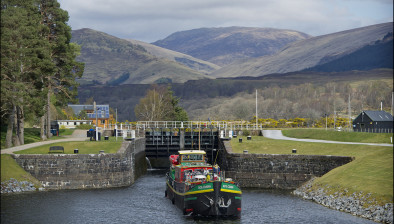A quarter of Scottish university buildings in ‘poor condition’

Almost a quarter of university buildings in Scotland have been found to be in a poor condition and in need of investment at a time of “significant cost pressures”, a new report has found.
Audit Scotland has warned that Scottish universities were increasingly using internal funds and borrowing to pay for capital projects which was “unsustainable” in the long term.
The overall condition of the estate indicates that significant expenditure will be required in the future. There are no overall backlog maintenance figures available for the sector, however, 22 per cent of the overall higher education estate in Scotland is in poor or very poor condition and 38 per cent of the sector’s estate dates from the 1960s and 1970s.
It is important for universities to invest in their estate and other infrastructure to continue attracting students, staff, research funding and other investment, such as partnerships with industry. They need a high-quality estate to improve the student and staff experience and remain competitive with other universities across the UK and the world.
In 2014/15, the sector spent £397 million on capital projects such as new student residences at Stirling, and a Data Technology building at Edinburgh. The Ancient and Chartered universities accounted for half of all capital expenditure.
Meanwhile, between 2010-11 and 2014-15 capital funding from the Scottish Government reduced from £83.5m to £28m, a real-terms reduction of 69 per cent.
The report by Audit Scotland said: “The sector faces significant cost pressures. Twenty-two per cent of the university estate is in poor condition and will require investment, and pension and national insurance contributions are increasing. Overall Scottish Government funding for universities has reduced and is likely to remain under pressure in the future.”
On the issue of universities using surpluses and reserves to fund investments in their estate, the report said: “For this approach to be sustainable, the sector will need to continue generating additional income or making further efficiency savings to create surpluses for investment.”
It added: “There are risks that universities with lower surpluses and reserves will not be able to continue to fund capital improvements at the level they require.”
A spokesman for Universities Scotland, which represents the sector, told The Herald that buildings were an essential aspect of universities’ ability to attract and recruit students, deliver high-quality education, conduct research for commercial partners and generate income as well as being an important part of Scotland’s culture and heritage
He said: “Students and lecturers at Scotland’s universities are involved in innovative learning and teaching and they need dynamic, flexible spaces rather than large lecture theatres to do it.
“Universities also need modern and well-equipped facilities to attract the right people to carry out the best research projects and maintain their world-leading status in areas like dementia, climate change and space exploration.
“Audit Scotland’s report makes it clear that in recent years universities have had to use their surpluses and reserves to meet underfunding in the university estate, but that it is not sustainable to do so.”















